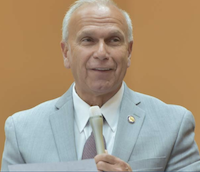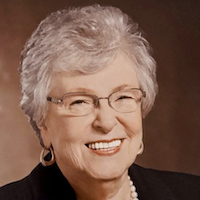Ohio Democrats criticize LaRose for squeezing removals between an August vote on an issue he favored and a November elections with an issue he opposes
Every year, Ohio’s county election officials go through their voter rolls to remove inactive registrations. Typically, it happens in the summer between the primaries and the general election in November.
But then a funny thing happened.
Republican lawmakers forced a special election in August to consider an amendment. Republican Secretary of State Frank LaRose led the campaign for that proposal which would’ve raised the threshold for all future constitutional amendments.
In June, LaRose issued a directive ordering county boards not to cancel any registrations ahead of the election in August. But he didn’t delay the process too long. The same memo set a new timeline for removing registrations in September.
But with thousands of registrations on the chopping block, and a general election around the corner, Democrats are crying foul.
Sweeney’s letter

State Rep. Bride Rose Sweeney, D-Westlake, pressed LaRose for information about the voters removed in the latest round of cancellations in a letter.
“If voters were indeed purged,” she wrote, “I urge you to undo this bad decision and restore them to the rolls since voting is already underway for this November 7th election.”
Sweeney pointedly noted the September timeline LaRose set in his directive actually conflicts with the November election. Reiterating the case LaRose himself typically makes, she argued the election technically begins when ballots start going out to citizens and service members overseas.
Those ballots hit the mail Sept. 22. LaRose’s directive set Sept. 28 as the date for removing voters.
Sweeney insisted LaRose didn’t have to order counties to remove voters when he did. “This is a purge of choice,” she argued, pointing to 2022, when registrations were removed after the November election.
“You even stopped the purge before the August 2023 election,” she wrote, “but now that our reproductive rights, our very lives, are on the November ballot, you have rushed to purge voters.”
In addition to the leading the charge for the August constitutional amendment, LaRose has campaigned forcefully against the reproductive rights amendment appearing on November’s ballot.
Although LaRose’s directive set the timeline for removing registrations back in June, Kayla Griffin from All Voting Is Local Ohio criticized the secretary for not adequately publicizing the process.
“Unlike previous purges that this office has conducted, this one occurred without their previous practice of publicizing the purge,” Griffin argued in a press release.
“Because of this lack of usual notification,” she added, “groups like All Voting is Local and our partners could not inform voters they may have been purged and would need to register to vote again before the voter registration deadline that was just 12 days later.”
LaRose’s response?
Ohio Capital Journal reached out to LaRose’s office for his response to Sweeney’s letter. LaRose never responded.
His office did however respond to Rep. Sweeney.
There are technically two processes for removing voters from the rolls, and chief legal counsel Paul Disantis suggested Sweeney was conflating the two.
The first process uses the National Change of Address database. That’s the one most counties completed in September, and it’s required under federal law. The secretary submits the state voter file and any names that show up in the NCOA database get flagged for county boards to double check.
“These steps include verifying a consistent lack of voter-initiated activity, sending numerous letters notifying a recipient that a registration is eligible for removal for lack of activity, and ensuring that duplicate registrations are removed from the voter rolls,” Disantis wrote.
The second, supplemental process is more controversial and gets triggered when a voter doesn’t participate for two full years. Again, county boards double check, and if the voter doesn’t participate for another four years, their registration gets removed.
Disantis noted none of the registrations up for cancellation came from that process, but he still defended the approach. He argued regardless of your politics, it’s required by state law, has been carried out by secretaries from both parties, and has been upheld by the U.S. Supreme Court.
He rejected Sweeney’s argument that the removals were a choice as “ridiculous and provably false.”
“It’s not a choice; it’s longstanding federal law,” Disantis insisted. “This process is also essential to ensuring the integrity and accuracy of Ohio’s elections.”
Nuts and bolts
Still, to Sweeney’s point about timing, nothing in state law forces LaRose to complete the list maintenance process ahead of November’s election. If anything, state and federal law discourage cancelling registrations ahead of an election.
The state statute laying out the NCOA process mirrors federal law and requires officials complete their work “not later than 90 days prior” to a federal primary or general election. In odd years, when there’s no federal election, Disantis said that limitation shrinks to 30 days, but his letter doesn’t cite where that appears in state code.
And in fact, three counties — Cuyahoga, Lucas and Summit — are delaying any removals until after November’s election. A Summit County official explained they held off because of September primaries.
The universe of voters on the verge of cancellation amounted to about 35,000 according to a secretary of state website. To this point, 26,666 registrations have been removed.
• • •• • •
This story is provided by Ohio Capital Journal, a part of States Newsroom, a national 501 (c)(3) nonprofit. See the original story here.














